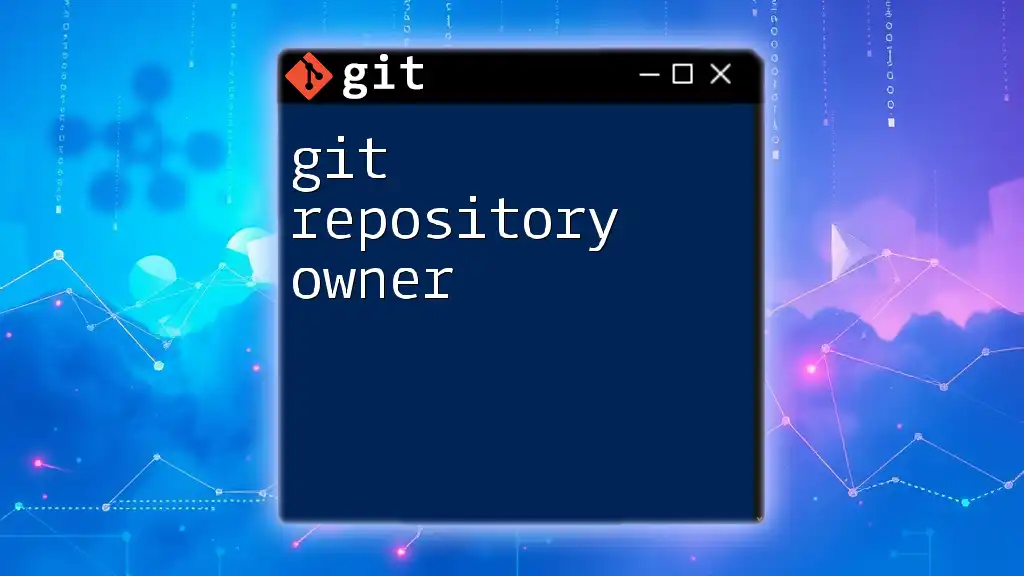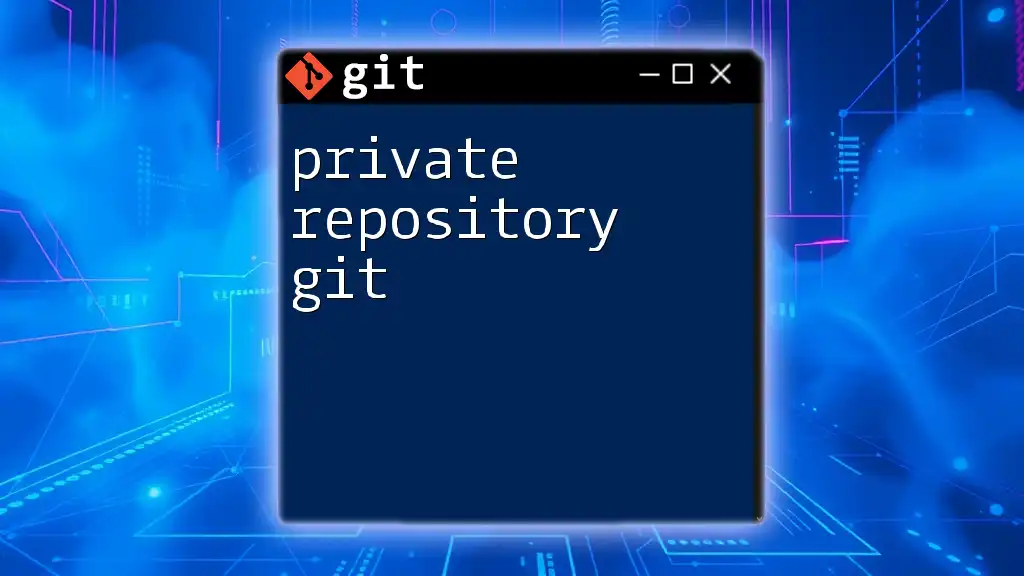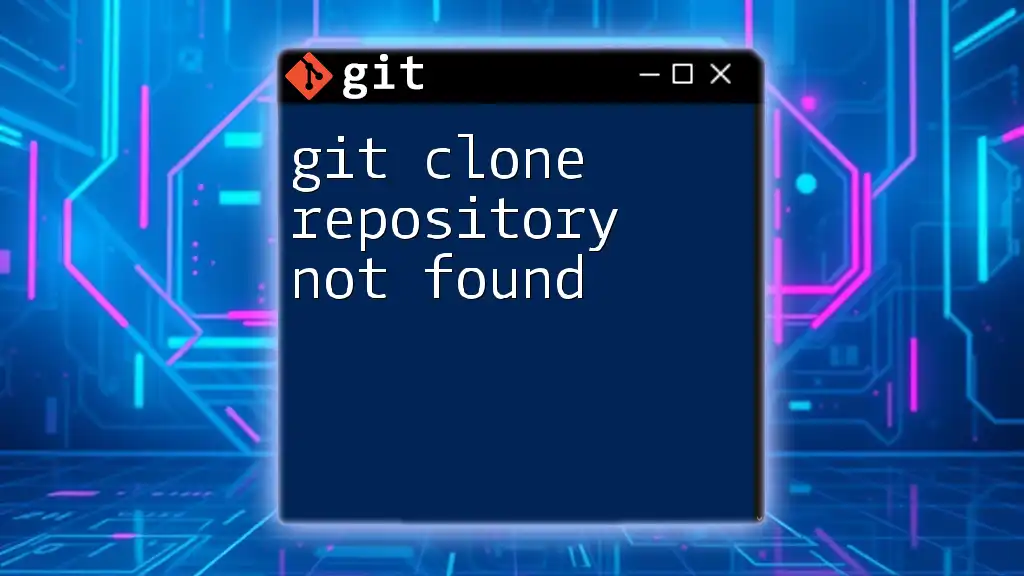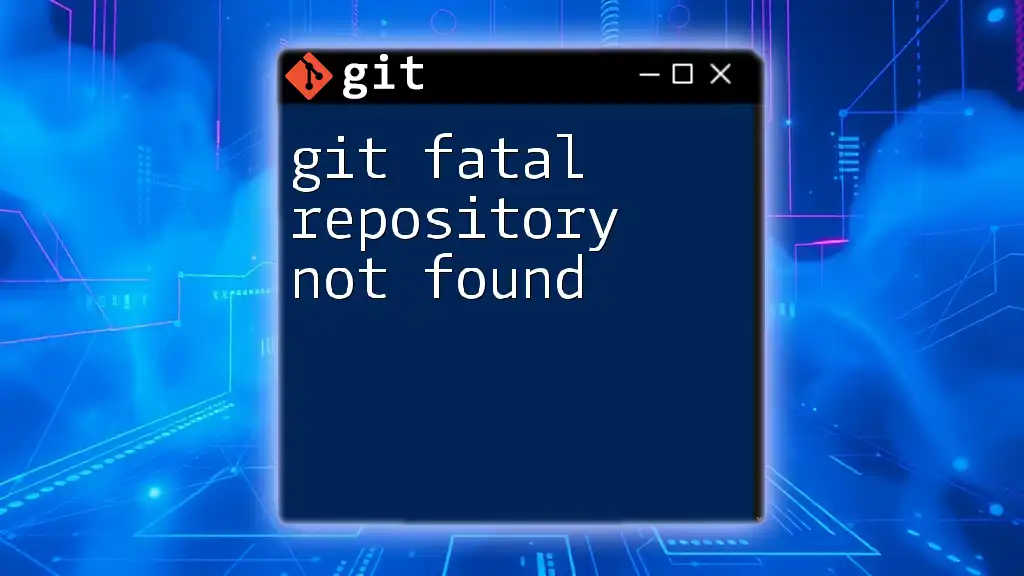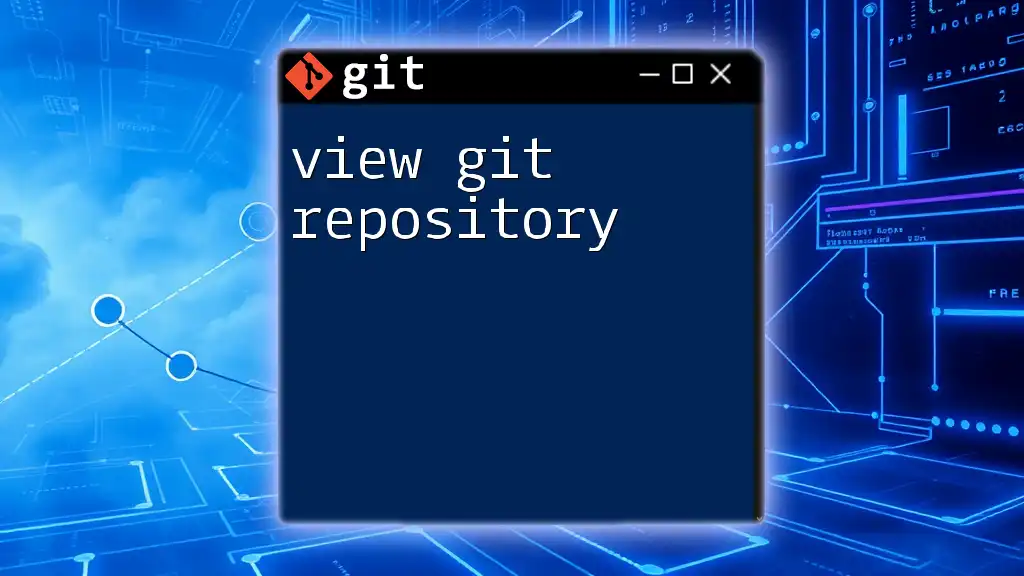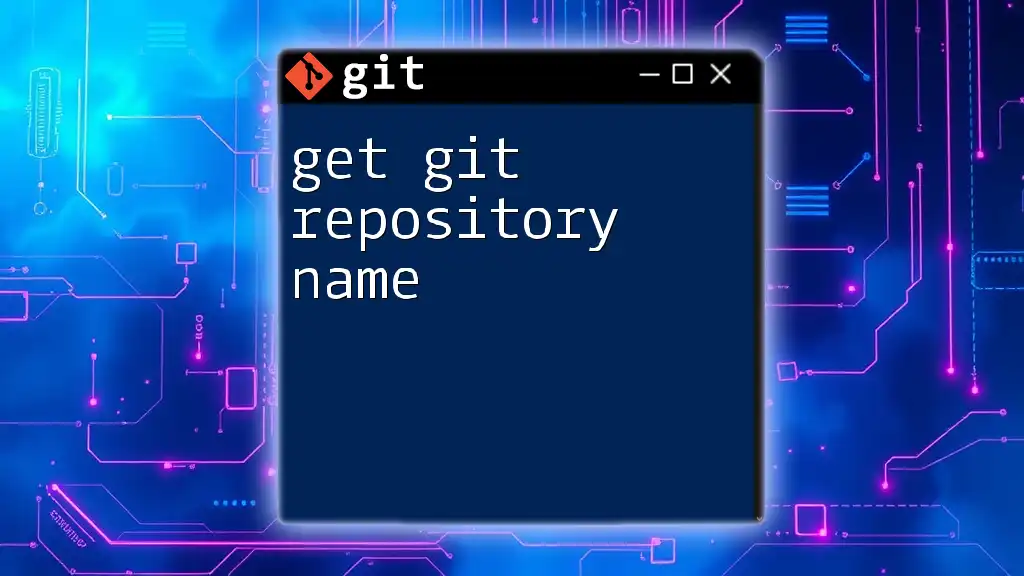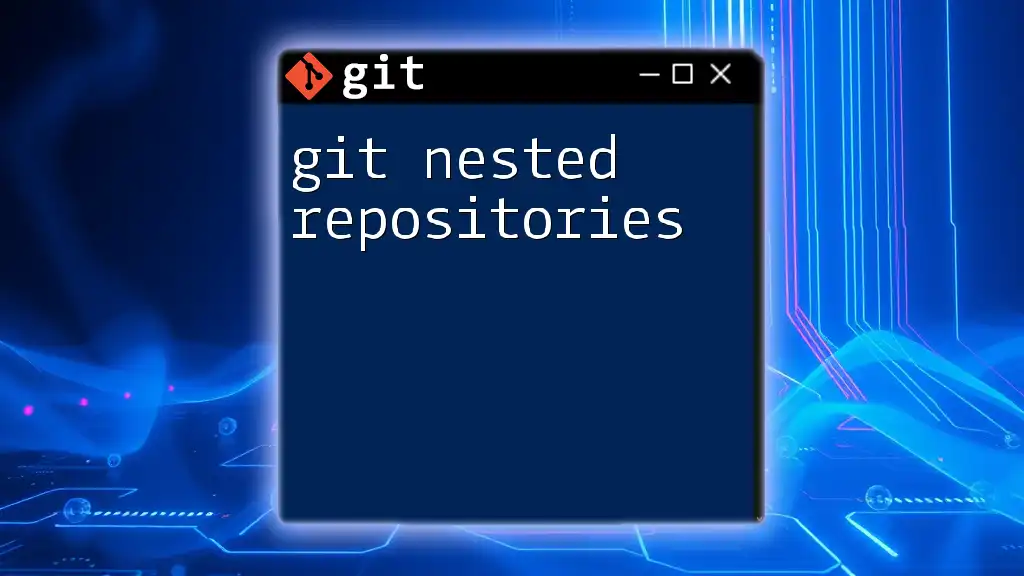A Git bare repository is a repository that lacks a working directory, meaning it only contains the Git version control information and is typically used as a centralized hub for collaboration between developers.
git init --bare my-bare-repo.git
What is a Bare Repository?
A bare repository is a version of a Git repository that does not have a working directory. Unlike a normal Git repository, which contains both the project's files and the version control information, a bare repository solely holds the version control data. This type of repository is commonly used as a shared repository where multiple collaborators can push their changes and sync their work without the risk of conflicts from local modifications.
The defining characteristics of a bare repository are as follows:
- No working directory: It lacks the full-fledged files that you would normally be working with in other repositories.
- Contains only version control information: This means it includes the `.git` directory files—everything from objects to refs—but not the actual project files.
Common use cases for bare repositories include:
- Centralized source code management for teams.
- Serving as remote repositories for projects hosted on platforms like GitHub, GitLab, or private servers.
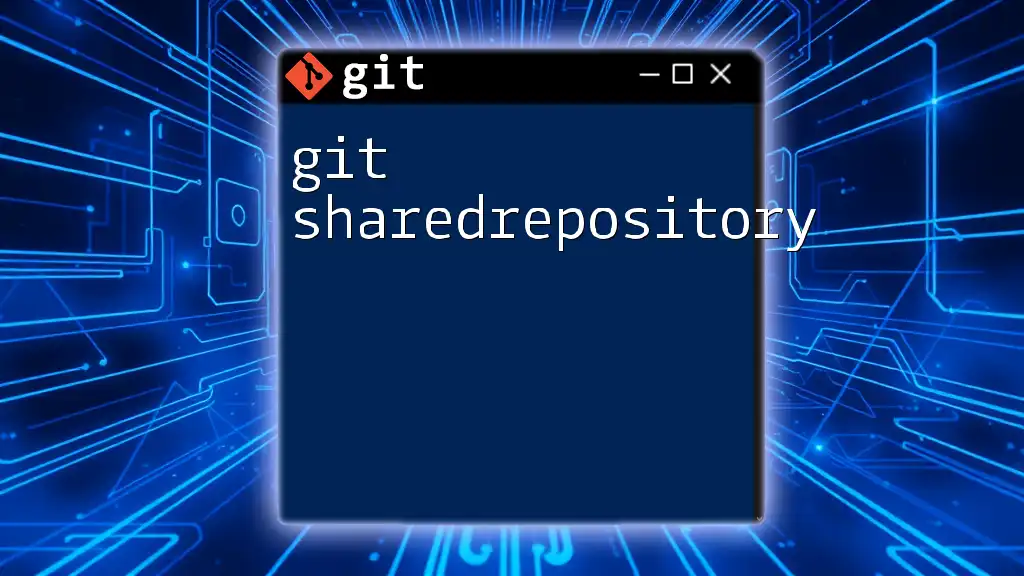
Setting Up a Bare Repository
Creating a Bare Repository
To create a new bare repository, you would use the following command:
git init --bare /path/to/repo.git
This command initializes a new Git repository at the specified path where `.git` files will be stored but without a working directory. The `.git` after the repository name signifies that it is a bare repository and typically aids in preventing any accidental modifications to the files.
Cloning a Bare Repository
To clone a bare repository to your local machine, you can use:
git clone /path/to/bare/repo.git
Cloning a bare repository is essential when you want to get a copy of the project files and start working on them. After cloning, Git creates a local repository with a working directory and sets up tracking branches for easier version control and collaboration.
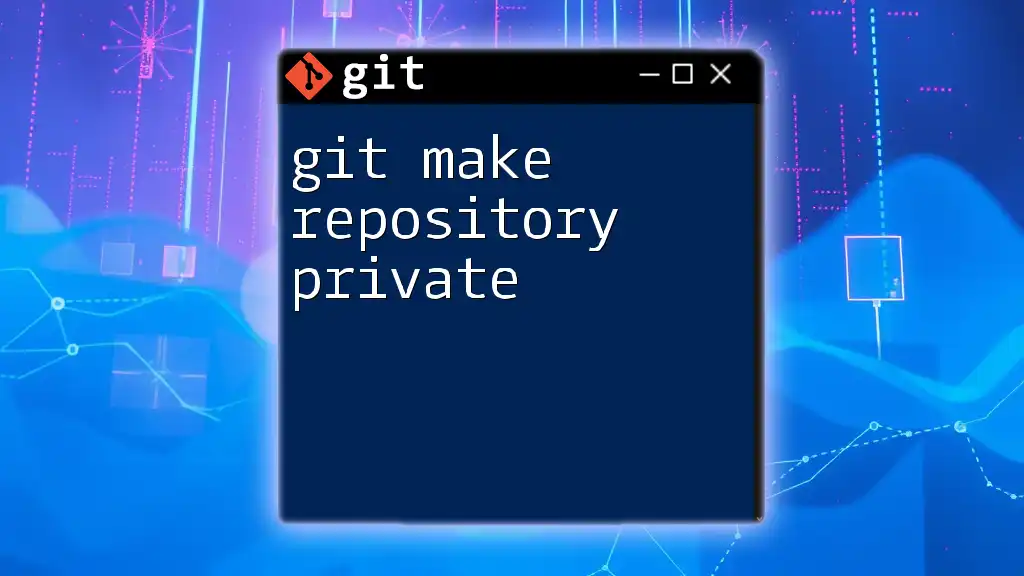
Managing a Bare Repository
Pushing Changes to a Bare Repository
When you wish to share your local changes with others using a bare repository, you do so with the push command. Here’s the sequence of commands to achieve this:
git add .
git commit -m "Your commit message"
git push origin master
- `git add .` stages the changes you've made in your working directory.
- `git commit -m "Your commit message"` records these changes with a descriptive message.
- `git push origin master` sends your committed changes to the bare repository for others to access.
This process is fundamental in collaborative projects, enabling everyone to sync updates efficiently.
Pulling Changes from a Bare Repository
To update your local repository with changes made by others in the bare repository, you run:
git pull origin master
This command fetches the latest changes from the specified remote (the bare repository) and merges them into your current branch. Keeping your local repository synchronized with the bare repository is crucial for minimizing conflicts and ensuring everyone's work aligns.
Fetching Metadata from a Bare Repository
If you want to retrieve the latest changes made to the remote repository without merging them into your local branch, you can use:
git fetch origin
Using `git fetch` allows you to see what others have contributed without altering your own local branches and is useful for reviewing changes before integrating them into your working environment.
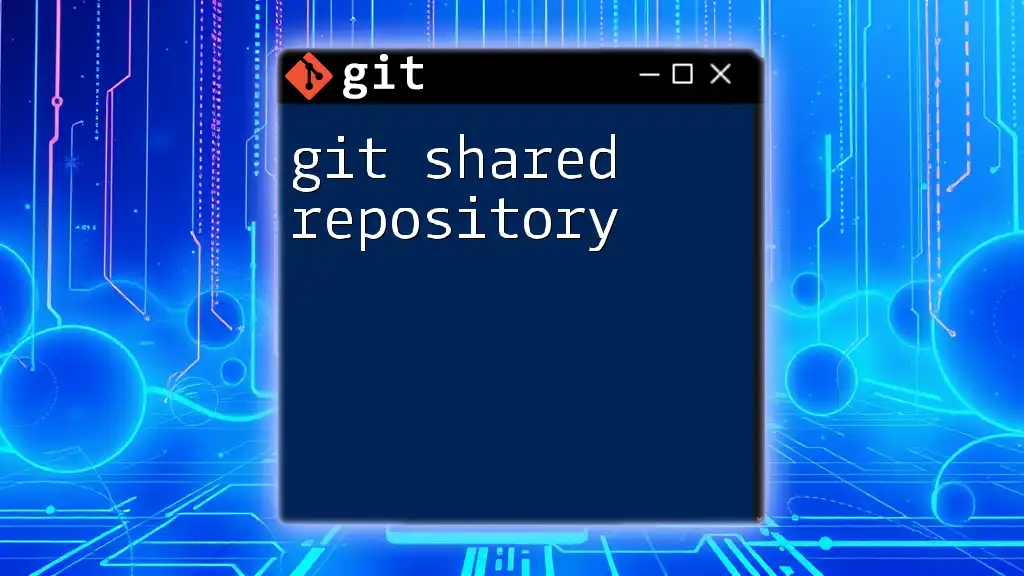
Differences Between Bare and Non-Bare Repositories
Comparing Features
When comparing bare repositories to non-bare repositories, the primary difference lies in their structure and purpose. A bare repository acts purely as a point for collaboration, while non-bare repositories serve as development environments.
- Bare Repositories: No working files, eliminating local changes that could cause complications. Ideal for shared use, reducing conflicts.
- Non-Bare Repositories: Contain working files permitting developers to edit and experiment locally. Useful for personal projects or development environments.
Use Cases for Each Repository Type
Bare repositories are ideal for:
- Shared projects among team members where centralized access is required.
- Remote repository services or backup.
Non-bare repositories shine in:
- Individual projects where local experimentation and editing are essential.
- Environments where frequent testing and deploying changes occur before committing to a shared repository.

Common Issues and Troubleshooting
Common Pitfalls with Bare Repositories
Using bare repositories can lead to several common pitfalls, including:
- Access permission issues: If collaborators do not have the necessary permissions, they may experience errors when pushing to or pulling from the repository.
- Conflicts during concurrent changes: Although bare repositories minimize the risk of local changes, issues may arise if multiple users are pushing changes at the same time without proper coordination.
How to Resolve Common Issues
Understanding how to troubleshoot your bare repository is key. Here are some best practices:
-
Check Remote Setup:
git remote -vThis command helps you see the current remote repository configuration and ensure everything is set correctly.
-
Error Messages: Be prepared for common messages like "failed to push some refs" due to unmerged changes. Ensure that your local repository is up-to-date (using `git fetch` or `git pull`) before pushing changes.
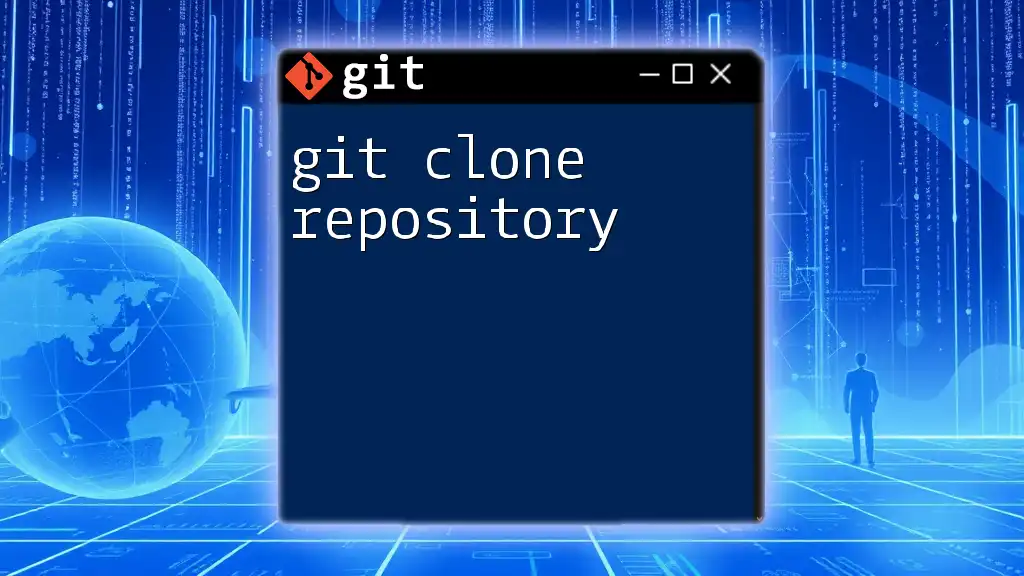
Best Practices for Using Bare Repositories
Version Control Workflow Recommendations
Effective version control involves strong branch management practices. Ensure that collaborators work on distinct branches and avoid cluttering the `master` branch with multiple untested features. Establish a branching strategy (like Git Flow) to streamline contributions.
Collaboration Tips
When working with multiple team members, it’s critical to maintain clear and consistent commit messages. Well-defined messages enhance visibility and understanding of project progress while assisting in troubleshooting when issues arise. Regularly communicate with the team to align on changes and contributions.

Conclusion
Understanding and utilizing a git bare repository is essential for effective collaboration in software development. By ensuring a centralized environment for version control, teams can work seamlessly together, minimize conflicts, and maintain clear records of project evolution. Embrace bare repositories to foster a more efficient workflow and improve collaboration in your projects.
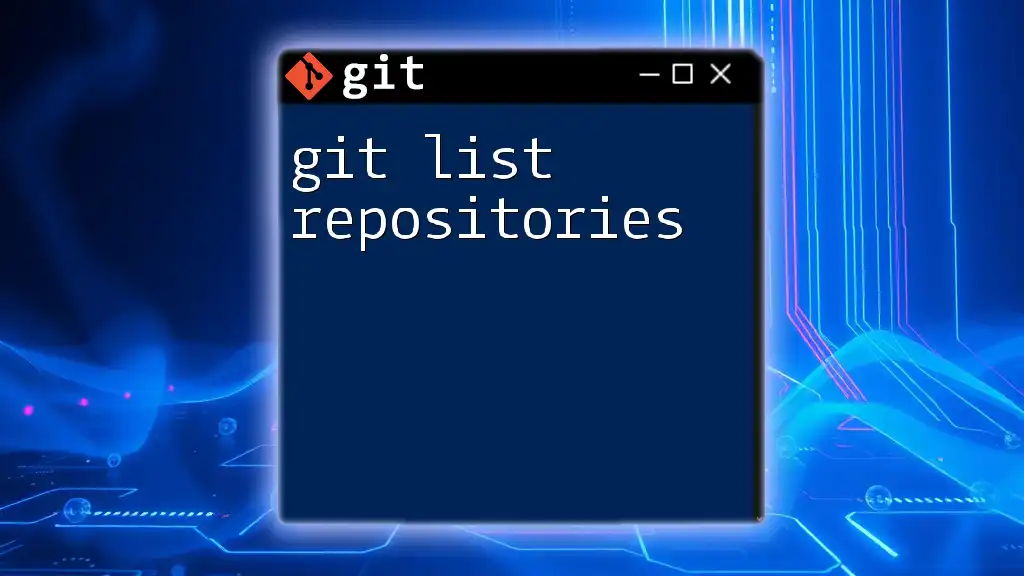
Additional Resources
To deepen your knowledge and understanding of Git, consult the official Git documentation and consider exploring recommended tools and further educational resources on Git best practices. Building a strong foundation in Git will not only streamline your workflow but also enhance your project's collaborative potential.








